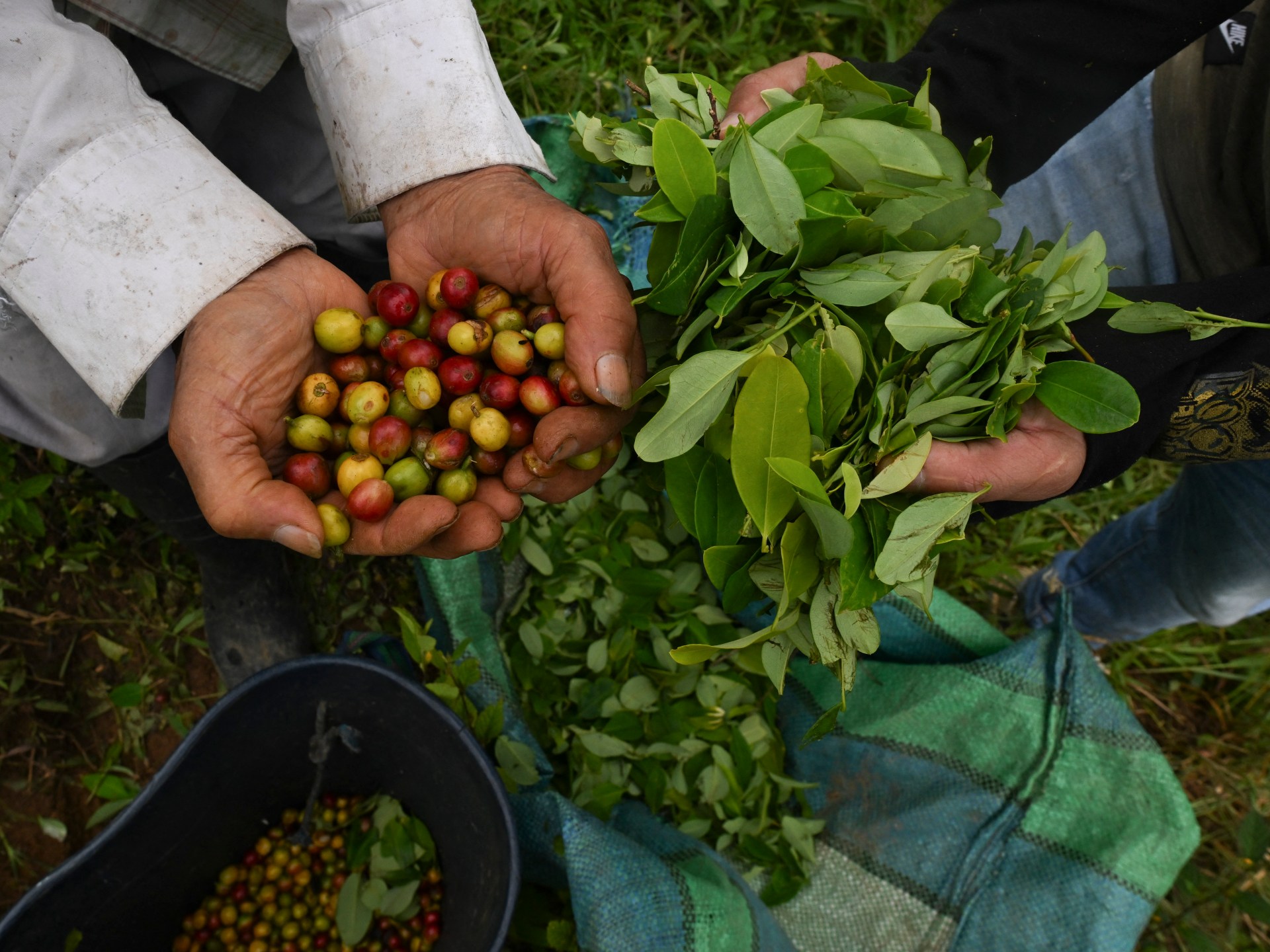Physical Address
304 North Cardinal St.
Dorchester Center, MA 02124
Physical Address
304 North Cardinal St.
Dorchester Center, MA 02124

As Cocaine Production reaches an unprecedented high, Colombia’s government is trialing a more peaceful remedy to its enduring narcotics crisis – offering payments to farmers to uproot coca crops, the primary ingredient in the drug.
Alirio Caicedo and his son Nicolas are Among the latest beneficiaries. A decade ago, they planted their fields with coca, strike their lives on the persistent demand from criminal gangs.
Now, the Caicedos are digging up those same crops, uncertain of what the future holds.
They are joined by about 4,000 other colombian families who have entered into agreements with the government to replace coca with cocoa and coffee.
The initiative forms part of a $ 14.4m effort aimed at reducing the supply of a substance blamed for inflicting Immeasurable misery on the country.
Colombia’s Rural Communities are often Coerced by Armed Groups into Cultivating Coca, with forests cleared to make way for the Illicit Crop.
Authorities are aiming to eradicate Coca on 45,000 hectares (111,000 accres) in three of colombia’s most conflict-riden Regions, including the Southwestern Micay Canyon.

For farmers like the Caicedos, the transition is fraught with risk.
There is no guarantee their new crops will thrive, nor that guerrillas and other armed groups – whose revenues are tied to cocaine – will leave them in peace.
With Coca, the Caicedos Say They Could Count On Earning Approximately $ 800 A Month. Under the new scheme, they have received an initial payment of about $ 300 to start cultivating coffee, with more in the pipeline.
Gustavo Petro, Colombia’s First Left-Wing President, Assumed Office in 2022 with a pledge to shift his country away from the United States-Led “War on Drugs”-A Campaign widely blamed for the double victimization of rural colombians Living Under the Shadow of Violence.
Since then, Cocaine Production in Colombia – The World’s Largest Exporter – Has soared to record levels, driven by sustained demand in Europe and the US.
Previous attempts at crop substitution have failed, often undermined by the disruptive actions of armed groups and the eventual drying up of government support.
Gloria Miranda, Who Heads Colombia’s Illegal Crop Substitution Programs, Cautioned That It Would Be Need To Believe The New Initiative Could End Drug Trafficking “If there is a market of 20 million consumers and it (Cocaine) remains illegal”.
President Petro, in his pursuit or “Total Peace”, has prioritized negotiation with armed groups over military confrontation, rolling back forced coca eradication.

However, most talks have faltered, and the return of Donald Trump to the White House in January has intensified pressure on Bogota. The Trump Administration is reassessing Colombia’s status as a partner in the anti-drug campaign, threating to curtail millions of dollars in military aid.
Given the high stakes, observers are concerned the crop replacement scheme may be exploited.
Some farmers may “try to decive” by Action State Funds while continuing to cultivate coca, warned argelia’s government secretary, Pablo Daza.
Without rigorous oversight, “The chances are quite high that we are wasting money,” said Emilio Archila, who oversaw a similar, ultimately unsuccessful, programs under Former President Ivan Duque.
Miranda insists that “meticulous” satellite monitoring will ensure compliance, promising that anyone found in breach will be expelled from the programs.
While Coca is best known as the RAW material for cocaine, its leaves are chewed as a stimulant in ahean cultures and brewed as a tea Believed to allviate altitude sickness.
Colombia has repeatedly called for coca leaf to be removed from the United Nations list of harmful narcotics in order to license its use in alternative products, such as fertilizers or books – Appeals which, for now, remain unanswered.